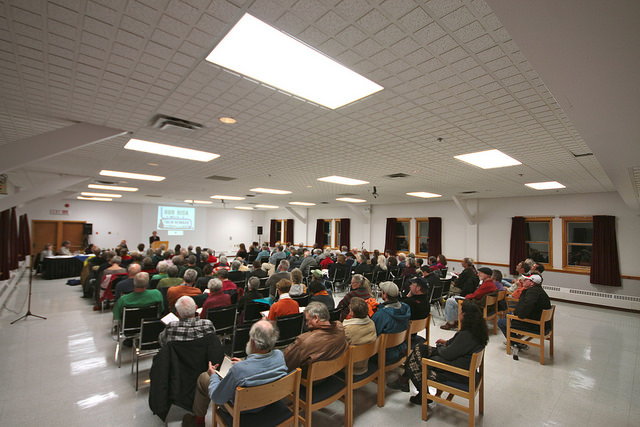After a successful event in Halifax we headed to Cornwallis, a small community of around 400, near Digby and Annapolis Royal. The evening public forum saw 130 local residents join us for a lively discussion facilitated by Hague, a nearby resident who used to work for Environment Canada.
From Cornwallis, we made our way to Saint John for another public forum, stopping in Sackville, New Brunswick to meet with local residents, students and professors that are at the heart of an amazing local fightback against fracking, and other social justice work.

Saint John
In each community we visited we held a series of meetings and site visits, in addition to the public forums.
Joining Cherri, Maude and I in Cornwallis was Hubert Saulnier, long-time local fisherman and President of Local 9 Maritime’s Fisherman Union. It was a real honour to have the opportunity to get to know Hubert in our short time in Cornwallis. As he says, he’s a fisherman, always has been, always will be, and that’s what he knows.
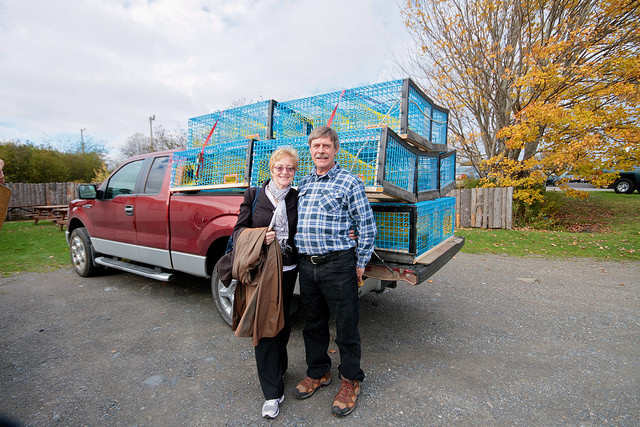
Maude Barlow and Huber Saulnier
Maria Recchia of the Fundy North Fisherman’s Association, shares Hubert’s concerns about the potential impacts of the project, and spoke at our Saint John public forum. Fundy North intends on engaging in the National Energy Board hearing process to defend their interests. What I learned from Hubert, Maria and others I had the opportunity to meet, is that fishing, while clearly no easy profession, is a passion, a good job and livelihood with deep roots in Atlantic history. These are jobs dominated by family, small businesses, not corporations. They are jobs passed down by generations. The New Brunswick side of fishing alone supports 50,000 good jobs.
While everyone knows that the Bay of Fundy has the world’s highest tides, I found it hard to fully grasp this until hearing (and seeing) that on certain days, waters could see a 29-foot rise. The power in the Bay is incredible, with few comparisons worldwide.
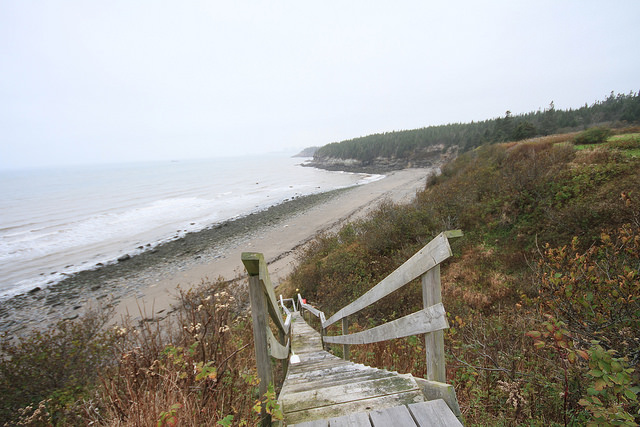
Bay of Fundy
Energy East would see a new deep-sea water port built in Saint John, in a beautiful area where homes dot the scenic coastline. This port, a $300-million partnership between Irving and TransCanada, would see tankers carrying 2.2 million barrels of oil ply the waters of the Bay of Fundy, from Saint John, along the coast of Nova Scotia, towards refineries in Houston, the Gulf of Mexico, India and possibly China.
Those who know Saint John know it is an industrial area with a refinery, nuclear plant, new Liquified Natural Gas terminal (very near where the new port would be) and more. The Irvings have been a driving force in this industrialization.
From conversations with local residents passionate about their community, this history hasn’t led to the prosperity that was always promised. Yes, there are some jobs. But project after project has come (and some gone), leaving an environmental and health impact, and still, Saint John remains one of the poorest communities in the country.
Some of the people who asked Maude, Cherri and I to join them at TransCanada’s open house for Energy East in Saint John described the promise of industry, of jobs for the community, as something they’ve heard many times before (and there is good reason to question job promises LINK, but I’ll leave that for another blog.
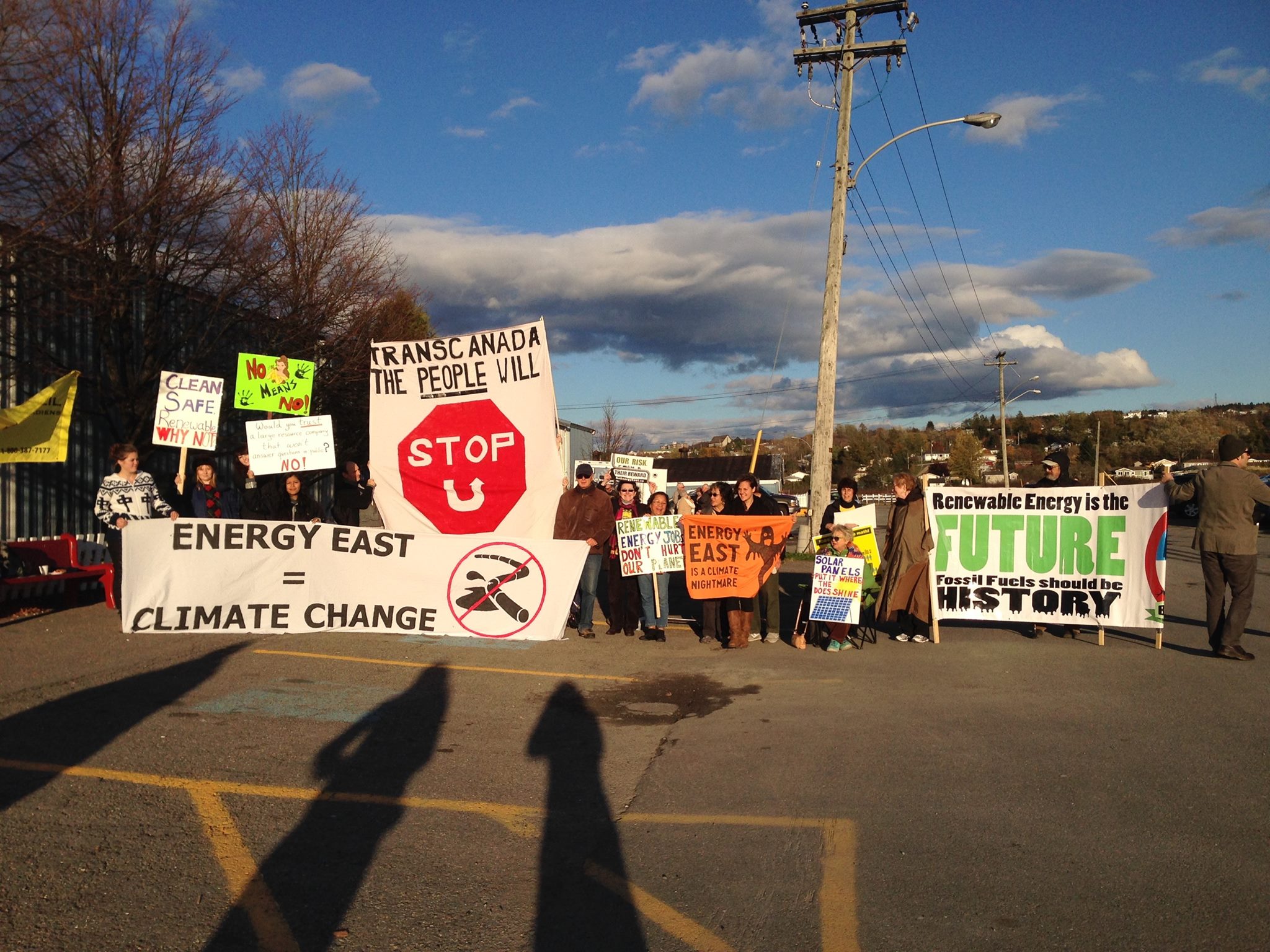
Rally outside TransCanada open house in Saint John
This industrial development has already led to serious local concerns, both for the environment and people’s health. Saint John is one of three areas in Canada with a history of smog pollution problems. Benzene (a carcinogen) levels at the Champlain Heights elementary school near the oil refinery were found to exceed acceptable world standards.
Energy East would see the pipeline end in a community called Red Head, recently rezoned as an industrial area, which would be home to a new 18-tank terminal storing over 1 million litres of oil. The spectre of a spill and volatile organic compounds making it into their air is a growing concern.
It would see an up to doubling of tanker traffic in the Bay of Fundy. While the likelihood of a tanker spill from tanker malfunction, fire or collision is small, increasing traffic undoubtedly increases this risk. And it would take just one major spill from tankers carrying up to 8 times what was spilled by Exxon Valdez to cause massive devastation.
In the words of one fisherman I met, the Bay of Fundy is overdue for a big spill. The Bay is already seeing large tankers, mostly importing crude to Atlantic Canada — primarily from the U.S., not the so-called “foreign countries” as claimed by TransCanada.
What is much clearer to me now, is cleaning up a spill in the Bay would be near impossible.
Not only does industry typically think recovering 10-15 per cent of what is spilled in marine waters a success, the sheer power of the Bay, of the tides would see a spill spread throughout the Bay in a matter of hours.
Tankers filled by Energy East would carry a range of crudes. This would undoubtedly include diluted bitumen produced in the tar sands. Not only is diluted bitumen where industry growth currently lies, it can’t be refined by the three refineries along the pipeline route. It is the heavy bitumen mixed with chemicals like benzene (diluents) to make it thin enough to transport by pipeline.
The diluted bitumen sank when spilled in Kalamazoo Michigan. A federal lab-based study official federal report confirms that diluted bitumen when mixed with sediment and beaten by waves — precisely the conditions of the Bay of Fundy — it formed tar balls and sunk.
Depending on the year, lobster can represent close to half of what is fished. Scallops are important too. Bottom dwellers. As Cherri Foytlin who experienced the BP Gulf coast spill shared, oyster (bottom dwellers) was wiped out by the spill.
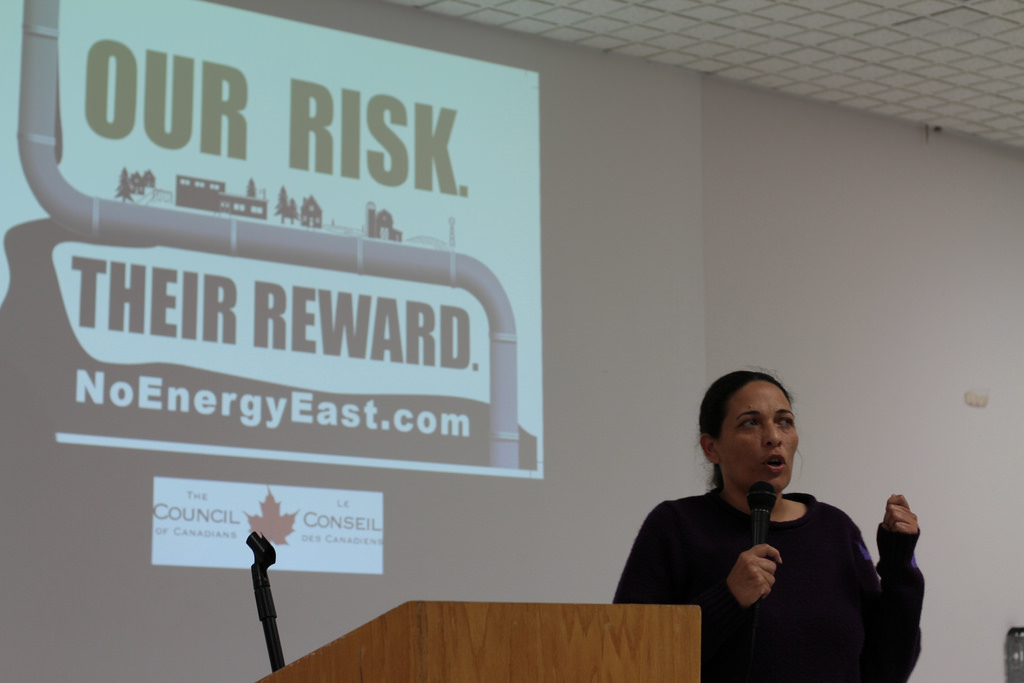
Cherri Foytlin
However unlikely a spill is, it still exists (and is probably more likely then vested interests suggest) and it would devastate these livelihoods that have been Atlantic culture for generations.
But as one TransCanada representative at the open house (more of a trade show, then consultation) said in response to my question about tanker safety and the impacts of a spill however unlikely they think it is, Saint John already has a port. In other words, Saint John is already industrialized, there are already tankers in these waters, the “probability” of a spill so small. Who cares?
Well, me for one. And the people I’ve met with while here. And I bet a whole lot of other people across this country will when we get the word out about the risks being asked of this region (and others along the pipeline route) for an export pipeline that will primarily benefit foreign corporations profiting from tar sands production.

While some would have us think opposition to this project is small in this region, I heartedly disagree. These communities have resilience and pride. These are the same people that brought in moratoriums on fracking.
TransCanada and Premier Gallant would be foolhardy to underestimate their concerns and power.
I’m leaving with a renewed sense of hope. Opposition is building right across the pipeline path. To stop tar sands expansion and the downstream impacts. To protect our climate for future generations. To protect our farmland (more on this in my next blog). To protect our waterways for drinking water, recreation, fishing, for whale watching.

